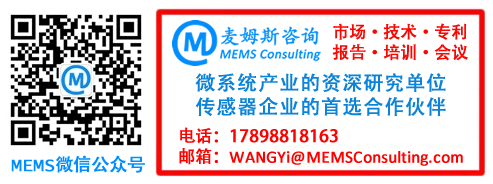
In the current wave of information technology, sensors, as the key “tentacles” of information perception and the “mother of data,” have deeply embedded themselves in various fields such as industrial manufacturing, healthcare, daily consumption, environmental monitoring, and aerospace. Their performance directly affects the operational efficiency and accuracy of various systems. Despite significant achievements over a long period, the sensor industry is now facing bottlenecks in technological innovation and application expansion, with growth trends slowing down and struggling to meet the ever-increasing demands of emerging industries and stringent parameter enhancement requirements. Quantum technology appears as a ray of hope, opening up unprecedented development pathways for the sensor industry and leading it into a new era of technological innovation and transformation.
Quantum Technology Injects New Vitality into the Sensor Industry
Since the 1980s, sensing technology has seen continuous innovations in sensitive mechanisms and materials, industrial production and processes, optimization and enhancement of technical indicators, multi-parameter composites and modular design, as well as digitalization, networking, integration, miniaturization, normalization, and cost reduction. After decades of technological iteration, there are now over 31,000 types of sensor products formed from eight major sensitive technologies: sound, force, light, gas, magnetism, temperature and humidity, RFID, and biological sensors. Long-term technological evolution has brought sensors close to maturity in principles and processes, with even type solidification and minimal functional and performance differences, leading to fierce homogeneous competition and limited exploitable potential. Major manufacturers lack breakthrough innovations in R&D, making it difficult to establish unique competitive advantages, resulting in insufficient development momentum for the entire industry.
As the sensor application market expands into various industries, especially with the strong rise of emerging industries such as autonomous driving, quantum communication, and precision medicine, higher performance requirements are being placed on sensors. Traditional sensors are increasingly showing limitations in detection accuracy, response speed, and anti-interference capabilities, making it difficult to meet new scenario demands. The emergence of quantum technology, particularly its application in sensor technology, injects new vitality into sensor technological innovation, ushering in a new era of sensitive mechanism innovation and industrial transformation.
Quantum sensors are characterized by ultra-high precision, high sensitivity, and ultra-fast response speeds, enabling them to break through the precision ceiling of traditional sensors and achieve extremely accurate measurements of physical quantities. They can respond to changes in a very short time, meeting the demands for high-speed dynamic measurements and playing an important role in scenarios such as monitoring the trajectories of high-speed moving objects.
As an important representative of cutting-edge technology, quantum sensor technology has become a strategic high ground for competition among countries. Developed countries, leveraging their strong research foundations, substantial financial resources, and comprehensive innovation ecosystems, have made early investments and achieved many pioneering results in technological exploration and application expansion, securing a leading position in international competition.
Countries and regions such as the United States, Japan, and Europe are leading the way in this field. The United States has invested massive resources in quantum technology R&D, with numerous top research institutions and companies actively participating, such as Caltech and IBM. Significant achievements have been made in key technologies like atomic clocks and quantum magnetometers, which have already been applied in high-end fields such as military and aerospace. Europe emphasizes joint R&D in quantum technology, supporting multiple quantum sensor research projects through EU framework programs, with notable advantages in applications in quantum communication.
In recent years, China has rapidly developed in the field of quantum sensors, with the government placing high importance on it and continuously increasing research funding, achieving significant results. Research institutions such as the Chinese Academy of Sciences have repeatedly achieved results in basic research and key technology breakthroughs in quantum sensors, with domestically developed high-precision atomic clocks reaching internationally advanced levels. Additionally, some enterprises have keenly positioned themselves in the quantum sensor industry, actively promoting the industrial application of technology.
Quantum Sensors are Moving from the Laboratory to Practical Applications
Currently, quantum sensors are gradually moving from laboratories to practical applications in industries. According to market research firm Allied Market Research, the global quantum sensor market size is expected to exceed $1 billion in 2024, reaching $1.14 billion. It is projected to reach $2.332 billion by 2026, with a compound annual growth rate of 17.7%. Regionally, the Asia-Pacific region, with its vast market demand and rapid economic development, is expected to become the fastest-growing area, with a compound annual growth rate of 19.2%. Among them, China, as an important economy in the Asia-Pacific region, is expected to surpass $10 billion in market size by 2030, driven by increasing government policy support and research funding.
Another market research firm, Grand View Research, reported that in the segmented market, quantum magnetometers are expected to occupy the largest market share due to their wide applications in fields such as healthcare, geological exploration, and national defense. At the same time, segmented markets for quantum gravimeters and quantum gyroscopes are also expected to show strong growth trends, with compound annual growth rates exceeding 18%. With continuous technological advancements and the ongoing expansion of application scenarios, the variety of quantum sensors will continue to enrich, and in the next 5 to 10 years, more types of quantum sensors based on new principles and materials are expected to be developed to meet the diverse needs of different industries.
Research has found that quantum sensors can form mature application scenarios in the following fields.
Medical Field. Utilizing high sensitivity, they can detect minute changes in biomarkers, enabling early diagnosis of cancers, cardiovascular diseases, and significantly improving cure rates. They can also monitor brain function by detecting the weak magnetic fields generated by neuronal activity using atomic magnetometers, and create high-precision magnetoencephalograms to assist in the diagnosis and research of neurological diseases.
Communication Field. In quantum communication, they can be used to detect single-photon signals, ensuring the security of quantum key distribution and building a solid defense for secure information transmission; they can also perform high-precision measurements of electromagnetic parameters of communication devices, optimizing device performance and enhancing communication quality.
Energy Field. In the process of oil exploration, quantum gravimeters and magnetometers can be used for high-precision geological structure detection, improving the accuracy and efficiency of oil exploration and reducing exploration costs. The performance of new energy batteries can also be monitored in real-time through quantum sensors, optimizing battery performance and extending battery life.
Intelligent Transportation Field. In the precise positioning process of autonomous driving, quantum inertial navigation sensors are not limited by satellite signals, providing high-precision and reliable positioning information for autonomous vehicles, ensuring safe driving in complex environments. Vehicle-road collaborative systems can use quantum radar to monitor traffic flow in real-time, achieving more accurate traffic flow predictions and intelligent traffic scheduling, alleviating traffic congestion.
Smart Agriculture Field. By quickly and accurately detecting nutrient content, pH, environmental meteorological parameters, etc., in the soil using multi-parameter quantum sensors, scientific basis for precision fertilization is provided, improving crop yield and quality. They can also monitor the physiological characteristics and environmental parameters of crops, enabling real-time assessment of crop growth status, timely detection of pests and nutrient deficiencies, and taking corresponding measures for intervention.
Financial Security Field. Quantum magnetic sensors can perform high-precision detection of the physical properties of currency, quickly and accurately identifying counterfeit money, enhancing the security of financial transactions. They can also monitor key facilities of financial institutions, such as monitoring temperature, humidity, vibration, etc., in vaults, promptly detecting anomalies to ensure the safety of financial assets.
Multiple Measures to Promote the R&D and Industrial Application of Quantum Sensors in China
With continuous breakthroughs and improvements in technology, quantum sensors are expected to be widely applied in more fields, driving the intelligent upgrade of various industries. In the future, quantum sensors will develop towards miniaturization, integration, and multifunctionality, deeply integrating with emerging technologies such as artificial intelligence and big data, injecting strong momentum into the development of the intelligent era. To accelerate the R&D and industrial application of quantum sensor technology in China, the following suggestions are proposed:
First, strengthen policy support and guidance. The government should formulate special policies to provide tax and land use incentives for R&D enterprises, encouraging them to increase R&D investment. Establish special funds to focus on supporting key technology breakthrough projects, guiding social capital into the quantum sensor field, and accelerating the transformation of technological achievements. At the same time, construct an industrial development plan, clarifying phased goals and key tasks to provide clear guidance for the development of the quantum sensor industry.
Second, increase research funding and collaboration. Universities, research institutions, and enterprises need to work together to increase funding for basic sensitive materials, product process technologies, and industry application research. Encourage deep cooperation between industry, academia, and research, building joint R&D platforms, integrating resources from all parties, and overcoming technical challenges. For example, research institutions focus on cutting-edge theoretical research, universities are responsible for talent cultivation and technology reserves, while enterprises convert research results into actual products, achieving complementary advantages and accelerating the innovation process of quantum sensor technology.
Third, strengthen talent cultivation and introduction. Universities should optimize related discipline settings, adding courses related to quantum sensors to cultivate interdisciplinary talents with knowledge in quantum physics, materials science, and electronic engineering. At the same time, introduce talent recruitment policies to attract high-end talents from abroad to return to China for quantum sensor R&D, enhancing the overall strength of the talent pool and providing intellectual support for technological innovation.
Fourth, establish standards and regulatory systems. Industry associations should work with research institutions, enterprises, and other relevant entities to accelerate the formulation of technical standards and industry norms for quantum sensors. Clearly define standards for product performance indicators, testing methods, quality control, etc., to ensure consistency and reliability of product quality, promote healthy and orderly market development, and enhance the competitiveness of quantum sensor products and technologies in the international market.
Fifth, expand application scenarios and markets. Encourage enterprises to actively conduct market research, deeply explore potential needs in various industries, and expand application scenarios. Strengthen cooperation with downstream enterprises to jointly develop customized solutions, promoting the application of quantum sensors in emerging fields such as intelligent security and quantum computing-assisted monitoring, cultivating new market growth points and expanding market size.
Sixth, promote collaborative industrial development. Build a complete innovation industrial chain, strengthening collaborative cooperation between upstream and downstream enterprises. Upstream material suppliers and midstream device manufacturers should closely cooperate to ensure stable supply and quality improvement of raw materials; midstream manufacturers and downstream application enterprises should communicate deeply, optimizing product design and performance based on market demand, forming a good situation of mutual promotion and collaborative development among all links of the industrial chain, contributing to the vigorous development of China’s quantum sensor industry.
Further Reading:《Quantum Sensor Technology and Market – 2025 Edition” 


